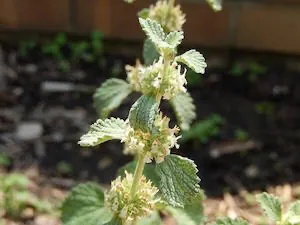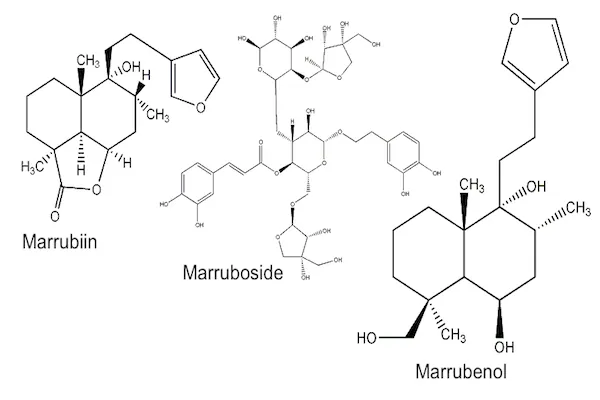Overview of Horehound
Scientific Name: Marrubium vulgare
Order: Lamiales
Family: Lamiaceae
Horehound is a widely used herb added to cough drops.
Strong:
insufficient informationGood:
insufficient informationPromising:
insufficient informationConflicting (Unclear):
insufficient informationLimited Evidence:
- Type 2 Diabetes [1]
No Evidence:
insufficient informationNo Clinical Research:
All other conditions.- Diarrhea
- Use caution or contact a licensed healthcare practitioner, since there is not enough research on the use of supplements containing horehound.
- Although horehound is generally recognized as safe, adverse events may include: irregular heartbeat and low blood sugar symptoms. Therefore, people with diabetics and irregular heartbeat should use caution while taking horehound.
There is not enough research on the use of supplements containing horehound during pregnancy and breast-feeding, so consult a licensed healthcare practitioner before use or avoid use. Horehound may cause miscarriages. [2-3]
Major:
insufficient informationModerate:
insufficient informationPotential:
- Anti-Depressants
- Anti-Diabetic Drugs
- Anti-Nausea/Anti-Vomiting Drugs
- Drugs for Irregular Heartbeats
- Drugs for Migraines
Horehound is not a "drug", so the best doses have not been thoroughly established. Make sure to follow the specific product instructions and take as directed on the label, or consult a licensed healthcare practitioner before use.
1. Herrera-Arellano A, Aguilar-Santamaría L, García-Hernández B, Nicasio-Torres P, Tortoriello J. Clinical trial of Cecropia obtusifolia and Marrubium vulgare leaf extracts on blood glucose and serum lipids in type 2 diabetics. Phytomedicine. 2004 Nov;11(7-8):561-6. 2. Fetrow CW, Avila JR. The complete guide to herbal medicines. Spring House, PA, USA: Springhouse Corporation; 2000. 3. Gruenwald J, Brendler T, Jaenicke C, editors. PDR for herbal medicines. 4th ed. Montvale, NJ, USA: Thomson Healthcare; 2007. 4. Fetrow CW, Avila JR. The complete guide to herbal medicines. Spring House, PA, USA: Springhouse Corporation; 2000. 5. Afendi FM, Okada T, Yamazaki M, Hirai-Morita A, Nakamura Y, Nakamura K, Ikeda S, Takahashi H, Altaf-Ul-Amin M, Darusman LK, Saito K, Kanaya S. KNApSAcK family databases: integrated metabolite-plant species databases for multifaceted plant research. Plant Cell Physiol. 2012 Feb;53(2):e1.

